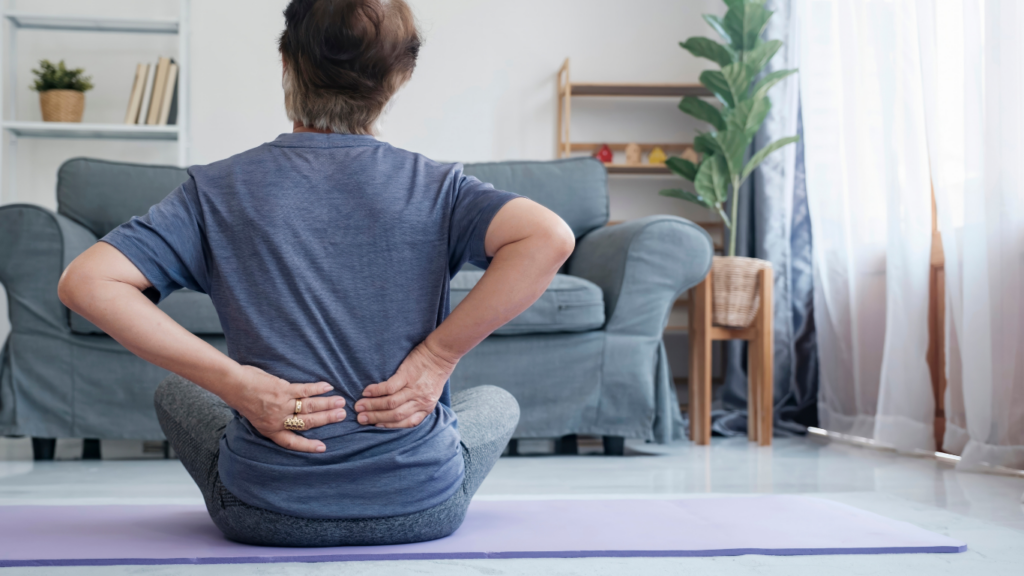As someone who’s passionate about fitness, I know how frustrating it can be to have lower back pain interrupt your exercise routine. It’s essential to prioritize proper form and technique to avoid this common issue.
In this article, I’ll share practical tips on preventing lower back pain during your workouts, so you can stay active and pain-free. I’ll cover the importance of warming up before exercise, maintaining a strong core to support your back, and choosing the right exercises to prevent strain.
By implementing these strategies, you can safeguard your lower back and enjoy a more effective workout routine. Let’s dive into the key strategies for keeping your back healthy and pain-free during exercise.
Understanding Lower Back Pain During Exercise
Lower back pain during exercise can be a common issue for many individuals. My experience as a fitness expert has shown me that understanding the root causes of this discomfort is vital in preventing it from occurring.
Here, I delve into the factors contributing to lower back pain during workouts and how you can address them effectively.
Common Causes of Lower Back Pain
Experiencing lower back pain during exercise is often linked to certain factors that can strain the lower back muscles and spine. Some common causes include:
- Poor Form: Incorrect posture and technique while performing exercises can put undue stress on the lower back.
- Weak Core Muscles: A lack of core strength can lead to compensatory movements that strain the lower back.
- Overtraining: Excessive or intense workouts without adequate rest can contribute to muscle fatigue and lower back strain.
- Improper Equipment: Using inadequate or improper exercise equipment can also lead to lower back discomfort during workouts.
By recognizing these common causes, you can take proactive steps to prevent lower back pain and ensure a more productive workout routine.
Common Causes of Lower Back Pain
Lower back pain during exercise can be attributed to several common causes. By being mindful of these factors, we can take proactive measures to prevent discomfort and injury.
Improper Form and Technique
I’ll emphasize the importance of maintaining proper form and technique during exercise. When movements are done incorrectly, especially with exercises involving the lower back, it can lead to strain and potential injury.
Ensuring proper alignment and technique can significantly reduce the risk of lower back pain.
Overtraining and Lack of Rest
Overtraining and insufficient rest periods can also contribute to lower back pain. When we push our bodies beyond their limits without allowing adequate time for recovery, we put ourselves at a higher risk of injury.
It’s essential to listen to our bodies, incorporate rest days into our workout schedule, and avoid overloading the lower back muscles.
Muscle Imbalances
Muscle imbalances, where certain muscles are stronger or tighter than others, can impact the lower back. When there’s an imbalance in muscle strength or flexibility, it can lead to compensations during movement, putting added stress on the lower back.
Addressing these imbalances through targeted exercises and stretching can help alleviate lower back pain during exercise.
Best Practices for Preventing Lower Back Pain
When focusing on preventing lower back pain during exercise, it is crucial to follow these best practices to ensure a safe and effective workout routine.
Proper Warm-Up and Stretching
Starting your workout with a proper warm-up and stretching routine is essential to prepare your muscles for the upcoming activity. By increasing blood flow and flexibility, warm-up exercises can help prevent muscle strain and lower back injuries.
Incorporating dynamic stretches like leg swings and arm circles can further loosen tight muscles and reduce the risk of discomfort during exercise.
Strengthening Core Muscles
Building a strong core is key to supporting your lower back and maintaining proper spinal alignment during workouts. Including exercises that target the core muscles, such as planks, Russian twists, and bird dogs, can improve stability and reduce the strain on your lower back.
By strengthening the core, you create a solid foundation that supports your spine and prevents unnecessary stress on the lower back muscles.
Using Proper Equipment and Footwear
Choosing the right equipment and footwear is essential in preventing lower back pain during exercise. Ensuring that your exercise equipment is properly adjusted to your body mechanics can help maintain correct posture and alignment. Additionally, wearing supportive footwear with adequate cushioning and arch support can reduce the impact on your lower back while providing stability during high-impact activities. By investing in proper equipment and footwear, you can minimize the risk of lower back pain and workout with confidence.
Implementing Lifestyle Changes for Better Back Health
Exploring ways to enhance back health beyond exercise is crucial. Lifestyle modifications play a significant role in preventing lower back pain and maintaining overall well-being.
Here are some strategies to help support a healthy back:
- Maintaining Proper Posture: When sitting, standing, or lifting objects, ensuring proper posture is essential. It’s important to keep the back straight, shoulders back, and avoid slouching to reduce strain on the lower back muscles.
- Prioritizing Ergonomics: Incorporating ergonomic principles into everyday life can make a substantial difference. Adjusting workstations, chairs, and computer setups to promote good posture can alleviate pressure on the back.
- Staying Active Throughout the Day: Remaining active and avoiding prolonged periods of sitting can benefit back health. Taking short breaks to stretch or walk can prevent stiffness and promote circulation in the back muscles.
- Maintaining a Healthy Weight: Excess weight can put added stress on the spine and lead to lower back issues. By maintaining a healthy weight through proper nutrition and regular exercise, individuals can reduce the strain on their back.
- Improving Sleep Quality: Quality sleep is vital for overall health, including back health. Investing in a supportive mattress and pillows that promote proper spinal alignment can contribute to a good night’s rest and reduce back discomfort.
- Managing Stress Levels: High stress levels can contribute to muscle tension and back pain. Incorporating stress-reducing activities like mindfulness, yoga, or meditation can help relax the muscles and alleviate back strain.
By incorporating these lifestyle changes into daily routines, individuals can proactively support their back health and reduce the risk of lower back pain during exercise. Building a foundation of healthy habits outside of workouts is key to preventing discomfort and enhancing overall well-being.


 Dawnny Armstrongster, the visionary founder of Toe Back Fitness, is a passionate advocate for health and wellness, driven by a mission to empower individuals to lead active, balanced lives. With a deep understanding of fitness and injury prevention, Armstrongster has cultivated a platform that merges expert insights with practical advice, making fitness accessible to people at all levels. Her commitment to promoting sustainable lifestyle habits and safe workout practices reflects her dedication to long-term well-being. Under her leadership, Toe Back Fitness has become a trusted resource for those seeking to enhance their physical health, choose the right gear, and build routines that align with their fitness goals.
Dawnny Armstrongster, the visionary founder of Toe Back Fitness, is a passionate advocate for health and wellness, driven by a mission to empower individuals to lead active, balanced lives. With a deep understanding of fitness and injury prevention, Armstrongster has cultivated a platform that merges expert insights with practical advice, making fitness accessible to people at all levels. Her commitment to promoting sustainable lifestyle habits and safe workout practices reflects her dedication to long-term well-being. Under her leadership, Toe Back Fitness has become a trusted resource for those seeking to enhance their physical health, choose the right gear, and build routines that align with their fitness goals.